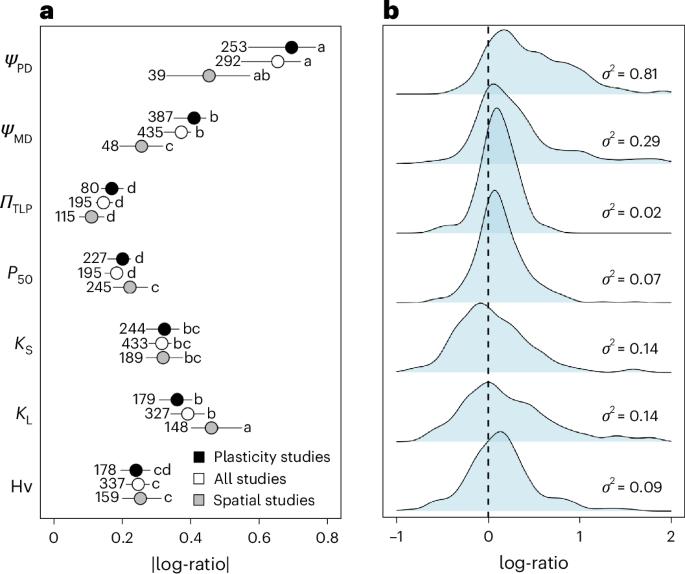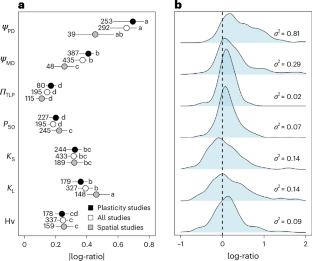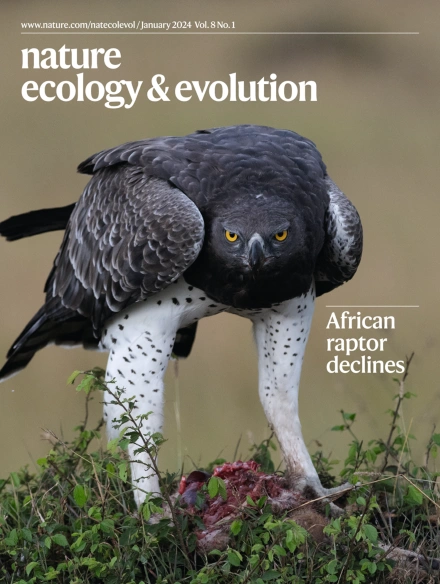Limited plastic responses in safety traits support greater hydraulic risk under drier conditions
IF 13.9
1区 生物学
Q1 ECOLOGY
引用次数: 0
Abstract
Understanding how plants adjust their hydraulic system to the environment is essential to predict how these organisms will respond to global change. Here we compiled a dataset and performed meta-analysis on 223 studies on plastic and evolutionary adjustments of hydraulic traits to air temperature, CO2 concentration, irradiance, soil nutrient and water availability. On average, species plastically increased embolism resistance and sapwood area per leaf area under drier conditions, with a decrease in stem-specific hydraulic conductivity and water potential at the turgor loss point, which are consistent with adaptive responses. However, the average increased embolism resistance was not sufficient to compensate the reduction in the minimum water potential, implying a lower safety margin from lethal hydraulic failure under drought. These results point towards a general critical increase in the risk of hydraulic failure in future drier environments. Plastic responses to increased soil nutrient content and irradiance did not always align with those to drought, highlighting the potential for changes in light and nutrient conditions to modify plant hydraulic responses to climate-change-driven droughts. Plants across many ecosystems are increasingly exposed to dryness stress. Using meta-analysis, the authors show that plants can adjust their hydraulic traits in response to drought and other global change factors, but not equally across traits and not enough to prevent lethal hydraulic failure.


在干燥条件下,安全特性的有限塑性响应支持更大的水力风险
了解植物如何调整其液压系统以适应环境,对于预测这些生物如何应对全球变化至关重要。在此,我们编制了一个数据集,并对223项关于水力性状对气温、CO2浓度、辐照度、土壤养分和水分有效性的塑性和进化调节的研究进行了meta分析。平均而言,在干燥条件下,物种的抗栓塞性和每叶面积的边材面积均有所增加,而在膨胀损失点处,茎比水力导率和水势均有所下降,这与适应性响应一致。然而,平均增加的栓塞阻力不足以补偿最小水势的减少,这意味着干旱下致命水力失效的安全边际较低。这些结果表明,在未来的干燥环境中,水力失效的风险普遍临界增加。塑料对土壤养分含量和辐照度增加的响应并不总是与对干旱的响应一致,这凸显了光和营养条件变化可能改变植物对气候变化驱动的干旱的水力响应。
本文章由计算机程序翻译,如有差异,请以英文原文为准。
求助全文
约1分钟内获得全文
求助全文
来源期刊

Nature ecology & evolution
Agricultural and Biological Sciences-Ecology, Evolution, Behavior and Systematics
CiteScore
22.20
自引率
2.40%
发文量
282
期刊介绍:
Nature Ecology & Evolution is interested in the full spectrum of ecological and evolutionary biology, encompassing approaches at the molecular, organismal, population, community and ecosystem levels, as well as relevant parts of the social sciences. Nature Ecology & Evolution provides a place where all researchers and policymakers interested in all aspects of life's diversity can come together to learn about the most accomplished and significant advances in the field and to discuss topical issues. An online-only monthly journal, our broad scope ensures that the research published reaches the widest possible audience of scientists.
 求助内容:
求助内容: 应助结果提醒方式:
应助结果提醒方式:


